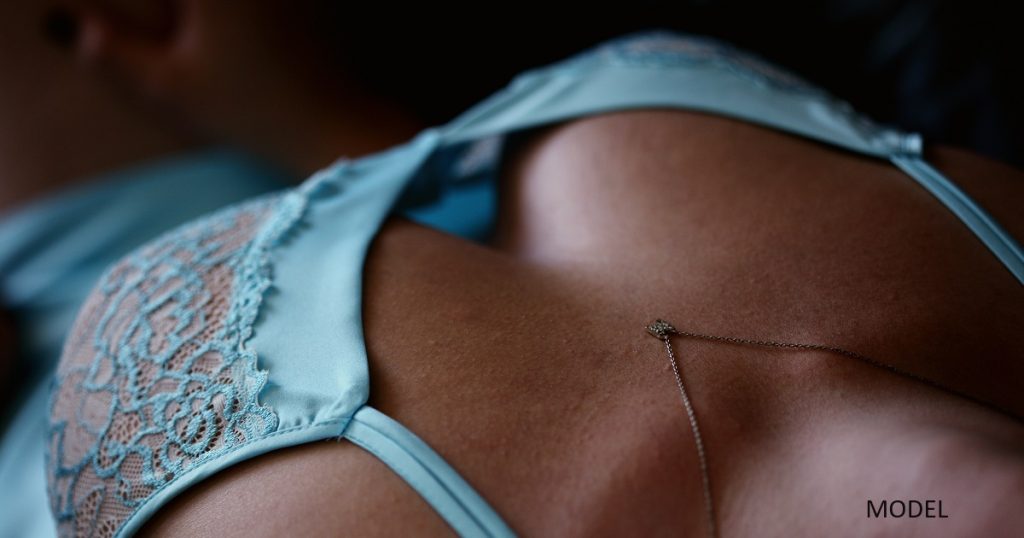When considering breast augmentation, most people would automatically think about the use of synthetic silicone and saline breast implants. However, many patients are surprised to hear they may have another option to enhance their breast shape and size using their own natural tissues. This technique is called fat grafting, and it involves borrowing fat cells from parts of the body where they are not needed or wanted, and transferring them to the breast where they provide additional shape and volume.
Fat grafting is not appropriate for every patient, and this technique has its own set of pros and cons just like implants do. Because the choice between fat grafting and implants can be confusing for many people, I decided to write this guide to help patients make informed decisions that best align with their aesthetic and lifestyle goals.
If you are considering breast augmentation surgery and want to learn more about your options for breast enhancement, please contact my Scottsdale plastic surgery practice at (480) 423-1973 or request a consultation to meet with a board-certified plastic surgeon.
Breast Augmentation with Implants
Breast augmentation with implants is a fairly straightforward surgery where implants are placed in the breast (underneath or above the pectoralis muscle) to provide more size and roundness. The advantage of implants is predictability: whatever size and shape is chosen is what the patient gets. In other words, a 300cc implant will provide 300cc of guaranteed volume for the patient. Additionally, the implant has a lot of structure, and is great at creating projection and roundness in patients with flatter chests. Finally, implants do not require surgical harvest as they simply come in a sterile package and are ready for immediate use in the OR.
Pros and Cons of Breast Augmentation with Implants
The main downside of implants is that they are a foreign body and are not meant to last a lifetime. As a result, they require removal and replacement periodically (usually every 10-15 years), and they can have complications such as capsular contracture (scar tightening around the implants), malposition or rippling that would not happen if there were no implants.
Fat Grafting to the Breasts
Fat grafting has almost opposite pros and cons relative to implants. The main upside of fat grafting is that it uses the patient’s natural tissue, therefore there is no need for replacement or maintenance like there is with implants. This creates a more convenient lifestyle for the patient with less need for future surgery. Fat is very soft and smooth and helps to hide irregularities of the breast.
The fat harvest via liposuction is both a pro and a con – it requires the recovery from multiple liposuction sites in order to get the fat, but patients are usually happier with the appearance of the slimmer liposuction sites when they are fully healed.
Pros and Cons of Breast Augmentation with Fat Grafting
The biggest downside with fat grafting is the lack of predictability compared to implants. First of all, patients need enough fat to harvest in the first place, so very slim patients are rarely good candidates. Additionally, fat is not as structural as an implant, so it is good for filling space where the skin is loose, but fat will not create roundness and projection in the same way an implant will in patients with tight or constricted skin and tissues.
For patients with reasonable fat deposits and looser skin, results can still be a little unpredictable. For any given patient, it is uncertain how much fat will be harvested, and of this volume, not all of it will be good enough to use after processing and purification of the fat cells.
Of the fat injected into the breast, usually 60% will stay permanently and 40% will be reabsorbed over the first 6 months after surgery, but this can vary patient to patient. As a result, volume is less predictable than with implants. Multiple rounds of fat grafting spaced 6 months apart are options for patients wanting more fat volume, but this requires more surgery and is usually not necessary.
Who Is a Candidate for Breast Augmentation with Fat Grafting?
Deciding if you are a candidate for fat grafting requires a consultation with an experienced plastic surgeon. Good candidates for fat grafting will usually have at least a moderate amount of excess fat for harvest, relatively looser breast skin, and will usually have a good amount of starting breast tissue into which the fat grafts can be added.
Patients with very small breasts (particularly if they want a significant size increase), tight skin, and minimal body fat are usually better candidates for implants.
Your Breast Augmentation Options
While there are some cases that seem more clear-cut for implants or fat grafting, many patients are in a “gray area” where both techniques are options with their unique sets of pros and cons as described above. For these patients I will usually have a long discussion about both options, and ultimately, we will go with the plan that best fits that patient’s aesthetic expectations and lifestyle goals. This detailed analysis leading to final surgical decisions is one of the many reasons a consultation with an experienced board-certified plastic surgeon is so important.
Working as a team with your plastic surgeon, you should be able to figure out which option is best for you!
Request Your Consultation
If you are ready to learn more about your breast augmentation options at Scottsdale Center for Plastic Surgery, please request a consultation or call (480) 423-1973 to schedule an appointment today. I look forward to seeing you.


Leave a Reply